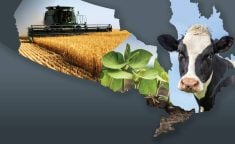So what’s caused this move to protectionism after decades of freer trade?
Call it the Trump effect. The United States, once the world’s leader in multilateral trade promotion, has derailed trade as it tries to win better deals for itself.
“(I)n all honesty it’s affecting a lot of countries around the world because a lot of countries trade with the U.S. and they are becoming much more protectionist,” Brian Innes, president of the Canadian Agri-Food Trade Alliance, said.
Canada, with its small population, depends on exports and therefore will be caught in the middle, says one agricultural economist.
Read Also

Manitoba to boost rural medical responders
Manitoba bursary aims for more accessible emergency medical responder training, better rural emergency health care.
“Canada just doesn’t have the same trade leverage as China, India or the United States does,” Al Mussell, of Agri-Food Economic Systems, said. “We’re too small for that. So that’s why, in lieu of leverage, a rules-based trading environment very much benefits us.”
But the situation isn’t all bad.
“We are actually exporting more agri-food products than we ever have at any point in history in Canada,” Innes said. “They have grown incredibly since we started our free trade agreement with the United States.”
Since that first deal, about 25 years ago, Canada has struck deals that have come to include two-thirds of the global economy.















